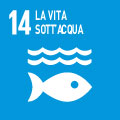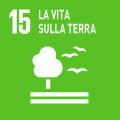- Docente: Sandro Manservisi
- Crediti formativi: 6
- SSD: ING-IND/19
- Lingua di insegnamento: Inglese
- Moduli: Sandro Manservisi (Modulo 1) Antonio Cervone (Modulo 2)
- Modalità didattica: Convenzionale - Lezioni in presenza (Modulo 1) Convenzionale - Lezioni in presenza (Modulo 2)
- Campus: Bologna
-
Corso:
Laurea Magistrale in
Ingegneria energetica (cod. 0935)
Valido anche per Laurea Magistrale in Ingegneria energetica (cod. 0935)
-
Orario delle lezioni (Modulo 1)
dal 20/09/2023 al 20/12/2023
-
Orario delle lezioni (Modulo 2)
dal 22/09/2023 al 15/12/2023
Conoscenze e abilità da conseguire
L'insegnamento ha la finalità di completare le conoscenze di base relative al moto turbolento di un fluido in applicazioni caratteristiche dell'ingegneria energetica. In particolare, si analizzano situazioni di turbolenza dinamica e termica nei flussi liberi e confinati da parete che sono di interesse industriale. L'insegnamento prevede anche l'introduzione di tecniche numeriche avanzate utilizzate per la soluzione di equazioni di conservazione di tipo diffusivo-convettivo a cui appartengono vari modelli di turbolenza. Al termine del corso lo studente acquisisce conoscenze riguardanti l'uso dei modelli di turbolenza in simulazioni numeriche di tipo DNS, LES e RANS per flussi incomprimibili.
Contenuti
The course, divided into two modules (module I (lecture) and module II (laboratory tutorial)), deals with turbulence models for engineering. The course has classroom and laboratory lessons. Classroom lectures deal with theory relevant to understanding turbulence and models used in engineering applications. The laboratory tutorials allows the student to directly understand the various models that have been created for the computational simulation of this phenomenon.
Module 1 (Prof. Manservisi)
Part 1 - Introduction
Turbulent flows. Conservation equations for incompressible flows: conservation of mass, conservation of momentum, conservation of energy, approximation of Oberbeck-Boussinesq.
DNS (Direct Navier-Stokes) equations. Basic statistical definitions, random variables, random vectors, statistical description of turbulent flows.
LES (Large Eddy Simulation) equations. Basic of LES. Filtering and LES equations.
The RANS equations. The Reynolds-Averaged Navier-Stokes equation, Reynolds-Averaged energy equation, the turbulence closure problem.
Wall turbulence. Channel flow, pipe flow, law of the wall for velocity, law of the wall for temperature.
Part 2 - Turbulence modeling:
LES (Large Eddy Simulation) models. Basic of LES modeling. Smagorinsky-Lilly model, sub-grid models.
Eddy viscosity models. The k-ε model, the k-ω model, near-wall turbulence treatment and boundary turbulence conditions.
Eddy thermal diffusivity models. The kθ-εθ model,the kθ-ωθ model, near-wall thermal turbulence treatment
Algebraic models: algebraic stress and explicit algebraic heat flux models.
Module 2 (Prof. Cervone)
Part 3 - Simulation on lab:
The simulation in laboratory is performed with open-source packages:
- Libmesh simulation (in-house turbulence models)
- OpenFoam simulation (OF turbulence class package)
Testi/Bibliografia
The course is based on teacher's notes. The notes and slides are available on https://virtuale.unibo.it
Metodi didattici
Conventional classroom lesson and laboratory tutorials.
Teaching material: the teaching material presented in class will be made available to the student in electronic format via the internet. To obtain the teaching material: https://virtuale.unibo.it.
In consideration of the type of activity and the teaching methods adopted, attendance of this training activity requires the prior participation of all students in modules 1 and 2 of training on safety in places of study, [https://elearning-sicurezza.unibo .it/] in e-learning mode
Modalità di verifica e valutazione dell'apprendimento
The exam consists of a written examination with three questions: one question regarding turbulence equations (part 1) and two questions on turbulence models (part 2)
Module 2
The exam consists of an oral exam in which the student illustrates a project with CFD simulations and turbulence models.
Strumenti a supporto della didattica
Personal computer and workstation in Lab 2.
Orario di ricevimento
Consulta il sito web di Sandro Manservisi
Consulta il sito web di Antonio Cervone
SDGs




L'insegnamento contribuisce al perseguimento degli Obiettivi di Sviluppo Sostenibile dell'Agenda 2030 dell'ONU.
